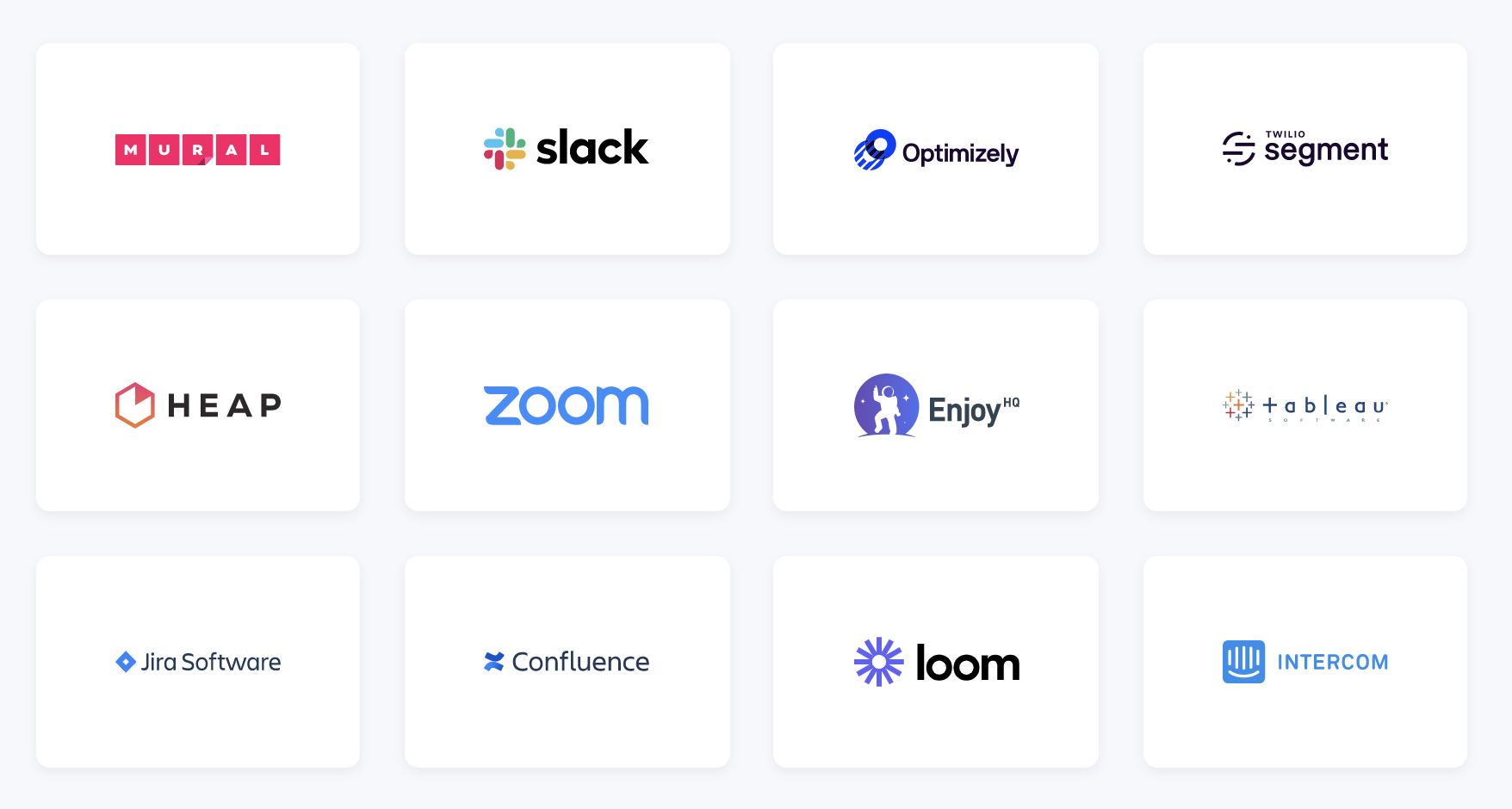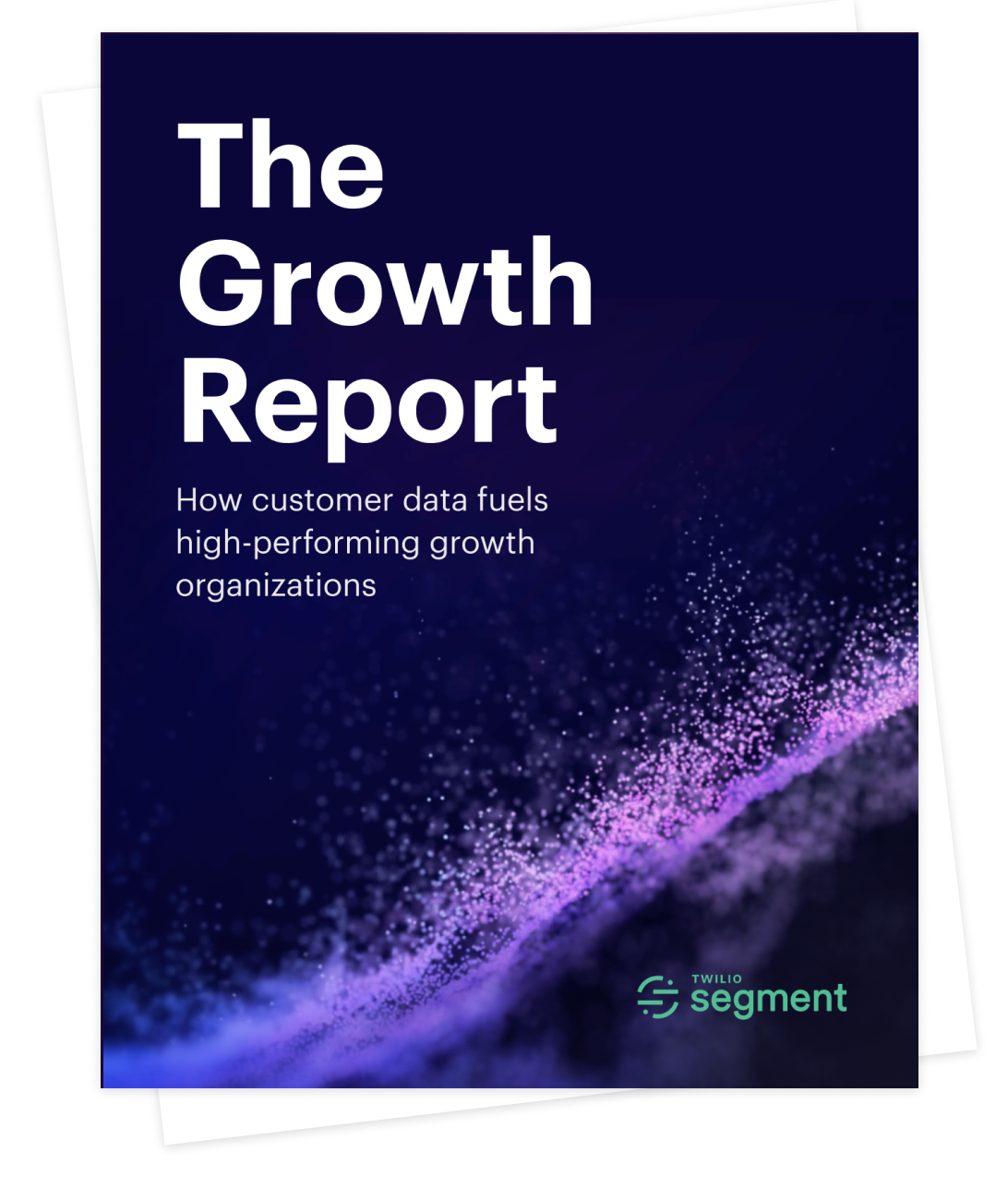Lessons from MURAL's Growth Org: Team Structure, Growth Processes, Tool Stack, and Secrets to Success
MURAL's VP, Product Growth Lauren Schuman reveals how the company's growth team drives results in an exclusive interview.
MURAL's VP, Product Growth Lauren Schuman reveals how the company's growth team drives results in an exclusive interview.
To understand how best-in-class companies build and operate their growth organizations, Twilio Segment recently launched The Growth Report, a series of interviews with the leaders of a dozen high-performing growth teams.
In this blog post, we share a profile of MURAL's growth organization as well as our on-screen interview with Lauren Schuman, VP, Product Growth at MURAL.
MURAL is a platform for visual collaboration, which helps to facilitate more productive brainstorms and meetings with its flexible features and digital-first design. The team behind this unifying software is known for being scrappy. They’re not afraid to roll up their sleeves to get things done and pride themselves in wearing a lot of different hats. These traits have helped drive exponential growth by tripling their annual recurring revenue in a single year.
We sat down with VP, Product Growth, Lauren Schuman to see how the company structures and operates its growth team.
The MURAL growth team organizes themselves around different pillars of the business, which include:
Activation (e.g., getting users to the “Aha!” moment)
Monetization (e.g., signing up for a free trial and expanding into premium subscriptions)
Enablement (e.g., A/B testing and tooling, data accessibility)
These teams are cross-functional, made up of product managers, full-stack engineers, data analysts, and designers, along with partners across content strategy and UX research.
Cross-functional collaboration and a data-driven mindset are two mainstays of MURAL’s growth strategy. Here’s a high-level look at their process.
For MURAL, product-led growth ultimately comes down to: how can we, through product usage, continue to drive annual recurring revenue? Their goal is to have users experience the product value as quickly as possible (the activation team often focuses on a user’s first week using the platform). To identify opportunities for growth campaigns or experiments, the team tracks the following metrics:
Monthly active members
Free vs. paid members
Activation rate
K-factor (how many users are referring MURAL, etc.)
System usability scores
After identifying a growth opportunity via data, it’s time to put it to the test. For example, let’s say the goal was to get new users to create their first MURAL within an hour of signing up for the platform. The growth team would start by walking through the user experience, and trying to spot any patterns when it comes to waning engagement rates. From there, they would work on a hypothesis (e.g. what if we promote personalized how-to sessions to users within their first hour on the platform?).
MURAL has a “minimum viable product” mindset. They’re always focused on shortening the timespan between an idea and insight, asking: with the resources we have, what would it take to get this experiment or campaign up and running as quickly as possible? The goal is to learn at a rapid rate, which means taking a “launch, iterate, and repeat” approach. In Lauren Schuman’s experience, “You have to be able to take this very insight-driven, not-afraid-to-fail-and-learn mentality,” because those learnings are going to be your competitive differentiator.

There’s a mantra that MURAL’s growth team lives by: start and end with insight. From ideation to execution, everything needs to be rooted in data. As Lauren Schuman said, “The value of a growth team is not just about what we launch, but our learnings, because those learnings can inform an entirely different part of our business.”
MURAL’s strategy is to deliver product value as quickly and seamlessly as possible. This means considering every facet of the customer experience — from onboarding to in-app behavior — and leveraging real-time analytics to start recognizing user intent (to more proactively personalize the customer experience).
The Twilio Segment 2021 Growth Report reveals key insights about how to build and operate your team for optimal performance. From team structure to growth processes, you’ll learn from companies like HubSpot, Shopify, and Lyft on how to lead your team and company to rapid growth.
To learn from the best in the business, download the report.

Get key insights about how to build and operate your growth team for optimal performance from companies like HubSpot, Shopify, and Lyft.